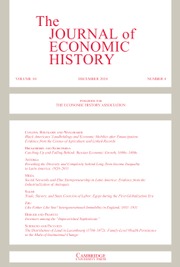Viktor Pál has written an important book that makes long-overdue contributions to the economic history of Eastern Europe and of socialist economic development. The economic history of industrialization has focused on the social and economic consequences of structural change and innovation and studied the roles of institutional, socio-cultural, and technological forces. By contrast, the impact of industrialization on the natural environment has received little attention in the literature. State socialism was one of the greatest social and economic experiments of the twentieth century. Its ideological program strived at industrial and social modernization while initially ignoring its environmental consequences, even though their significance for the quality of life, social peace, and welfare cannot be denied. The book makes a novel claim that the socialist state in Central Europe was instrumental in building the foundations of modern environmentalism and mass environmental movements and that, as a consequence, the last decades of state socialism witnessed a remarkably high degree of environmental consciousness—in the view of the author, significantly higher than today. Another interesting revelation is how strong western, especially West German, influences had become in shaping environmental reforms and bringing about an environmental shift in the political agenda of the socialist state following the golden age of postwar growth.
The first chapters of the book provide both a historical overview of the relationship between industrialization, technology, and the environment in the broader European and national contexts, as well as a comparative account of the environmental challenges and policies in both western market economies and East-Central Europe in the socialist period. This international outlook is not only useful as a context for the environmental history of socialist industrialization. Economic historians interested in environmental history may use these parts of the book as reference readings on their own. The main body of the monograph deals with the role of the environment in socialist economic development and economic planning in Hungary, following a chronological approach. This helps the reader understand how the environmental impact of socialism changed with the development of industrial technology and how environmental concerns shaped economic policy increasingly as the state-socialist regime and the economic system had become more open and less centralized. This makes the monograph a truly interdisciplinary enterprise, one that writes a history of the environment, technology, and the state.
The book is rich in case studies documented in either national historiographies or primary sources largely unknown to the broader international audience. This is the main strength of the project, as these case studies both highlight the evolution of environmental consciousness and environmental policies over time and reveal remarkable similarities between different countries, most notably between centrally planned and western market economies. Well-defined case studies also help the reader better understand the motives and the impact of environmental policies. The case-study approach enabled the author to utilize a large body of contemporary press publications, which complement the specialist literature and institutional publications very well. Chapters 5 to 7 investigate the main themes of the book in the context of one particular industrial region in northeastern Hungary. One may find this focus too narrow for a monograph targeting an international audience, but this provides a deep introspection into the complex relationships between the economy, the state, civil society, and the environment that can be traced chronologically.
For historians of eastern Europe, a particularly welcome contribution of the book is that it paints a much more complex image of state socialism and socialist society than what older, better-known comparative economic systems literature had suggested. The well-documented case studies and the frequent use of often amusing anecdotes from the popular press reveal an increasing degree of transparency and consciousness concerning critical matters of policy. Despite sweeping ideological differences and the existence of a centralized authoritarian political system, environmental policy faced similar challenges and was shaped by similar dynamics in both East-Central and Western Europe. In this sense, the book contributes to a growing body of revisionist literature on the economic history of state socialism, which claims that many of the fundamentals of economic change in the former Soviet bloc were not idiosyncratic.
The book may come short of expectations for economic historians in two respects. First, while the author taps into the complex national historiography of state socialism and develops case studies, the broader international literature on both western and eastern European industrialization and postwar economic policy was largely out of date. Most of the new economic history of the industrial revolutions and postwar economic development and institutions is ignored. This would make the narrative somewhat old-fashioned for most readers of this Journal. Second, even though the discussion is loaded with quantitative evidence, there is scant reporting of statistical data summarized in tables and figures. While most readers will find the rich photographic illustrations (which may have made this short book very expensive) not broadly informative, the absence of summary statistics diminishes the usefulness of the historical and comparative overviews presented in the first chapters. Still, Pál has made an important scholarly contribution, but the price of his book and the style of his narrative may limit its audience.


